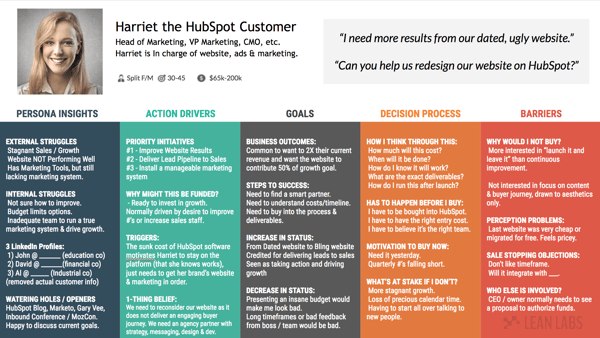When you think of stories about heroes and mentors, there are endless examples. There is Gandalf the Grey and The Fellowship of the Ring, or Mufasa and Simba in The Lion King. And perhaps one of my favorites, Luke Skywalker and Yoda.
It's a familiar narrative. The hero goes on an epic quest, and the mentor guides him along the way. We care about these stories because we see the hero fulfilling his purpose. And when it comes to your relationship with your customer, the narrative can be the same.
If you can build the same kind of trust between hero and mentor, you can establish much stronger bonds with your customers. We see it all the time in business. Companies like REI, Trader Joe's and Apple have diehard fans because their customer is always the focus. And you can start inspiring that kind of trust with your website content.
However, when putting together your website content, how do you position your customer as the hero, and still get them to buy into your vision, solution, or product? The answer is easy. You have to help them.
Creating Customer-Centric Website Content
When customers feel like you care about their motivations and goals, they care about you. It's like any standard relationship. However, with your customer, you don't always have the face-time to connect and engage with them on a personal level. That's where content comes in. If you can learn about what motivates, inspires, and triggers them to take action, you can create website messaging that feels genuine and authentic.
Here are a few ways we create that kind of website content.
Be Clear On Your Niche and Targeted Audience
To be successful with website content, you need to ditch the notion you're marketing to everyone. There are too many options and factors for that to be true. Your solution or product has a feature, benefit, or price-point that matches up with about 3-4 different types of personas. Those customers matching these personas should be your focus.
These personas include preferences and demographics, and zoom in on external and internal struggles. For instance, aside from their job title, what do they do in their company? How do they feel about it? What actions do they need to take to get a promotion, or gain more influence at the office? We use a one-page strategy document that helps us determine some of those factors, a one-page Buyer Persona Template (included in our Strategy Kit.)

These questions help you focus on the most influential aspects of your customer, and craft website content that feels like it was written just for them.
Hit Your Target's Primary Objections and Challenges
When you consider customer challenges, you need to get specific. Otherwise, all of your content will seem vague and won't motivate them to do anything. Why wouldn't a customer buy from you? What could get in the way of a sale? A few other questions we use to guide our thinking around customer objections are:
- What's their perception of your company?
- Which of those perceptions are barriers to your solution?
- What questions or concerns could stop a sale?
- Beyond just professionally, who else has involvement with their purchasing process?
Within these challenges are pain points that you can help resolve. It starts with identifying what they are, and how your solution can help them through it.
Fulfill Your Three Jobs
When it comes to your customer, your product has three jobs. There is a social, emotional, and physical job. Each of these jobs helps your customer improve. Here's how we break down each of these jobs:
Emotional Jobs
When the customer uses your product, what will their emotional state be? By thinking through how your customer aspires to feel, you can fine-tune how you present your offers and solution.
Social Jobs
We all care what people think about us. When the customer invests in your product or company, how will they look to others? If the answer is negative, this is especially important to figure out and resolve.
Physical Job
What task will your solution or offer help the customer accomplish? If you can pinpoint how it helps your customer, you can create stronger messaging during the most persuasive points in the buyer journey.
Identify Your Customer's Trigger Events
Customers won't find you on a whim. They're looking for an answer. What is happening in their personal or work life that is motivating them to look for that fix? If they do not solve the problem, what will happen next? These trigger events can inform messaging and how you build out your buyer journey. For example, if a project manager needs to find a new project management software, the potential outcome of not finding the right tool may be a demotion or lacking organization at work.
You can also use these triggers to inspire marketing email workflows, social posts, and more. These events tap into your customer's greatest fears. If you push on those fears gently, you can guide the customer towards you.
Speak To Their Aspirations and Dreams
Status means something to us all. Anyone looking to invest in your company or try out your product has something they're aspiring to be. Think through what will happen for the customer if your product or solution does everything it's supposed to do. You can use this to speak right to their ego, and position yourself as the guide they're seeking.
Alternatively, if your solution could decrease their status, this is a problem for you to address in your website content. It's possible that some of these ideas are perceptions, but to appease the customer, you must find a way to speak to it.
Understand The Value of Your Product
In addition to a solid understanding of your customer, you need to understand your product. You need to outline what your product or service does for your customer. You will need to answer this to help create website messaging for conversion pages, or any pages that break down the features and benefits your solution has.
And the more specific you can get about the value your product has, the more you can call it out on your website. If you can go as far as to compare these features with a competitor, you can prepare your website content to explain the differences between the two. You can also use this information to look for reviews, testimonials, and proof that your product does everything you're promising.
Invest In The Buyer's Journey
You've probably heard about the buyer's journey quite a lot. The buyer's journey has become a marketing buzzword, but that doesn't decrease its role in your efforts. The buyer journey is essential to get right, as it will inform everything about your website content. It will tell you which offers, blog posts, and landing pages you need to build at every stage.
Here are all of the stages of the buyer's journey, and why each one is crucial for creating website content.
Awareness
During this stage, the customer is still getting to know you. What can you use to hook them? What are some great blog post titles that will answer some of your customer's most common concerns or questions? All of these questions can inform content.
Interest
After the lead indicates interest, what types of offers could bring them further? Go back to their problems at this stage. You want to offer something like an EBook or Worksheet that they can use to begin to overcome their challenge. Whichever type of content asset you decide on, you want the customer to value and remember your brand for making the asset available.
Desire
At this stage, you're reeling in potential customers. Often, we automate email workflows here to stay top of mind as they continue to move further in the journey. You need to keep delivering value and making them feel like you're a guide, not a company selling to them.
Consideration
For the last stage, you need to offer something like a profile, demo, or trial that would get the customer to see the value in what you're selling. You want them to test it out, and immediately understand how it could make their life better.
Decision
What is it going to take to get your lead to become a customer? What “calls to action” will entice your target customer to come to the table and invest?
The entire buyer's journey (one per persona) will help you generate all of these content ideas, as well as the essential website pages you need to support them. It could be a blog post, a conversion page, or a belief page that explains why your company cares about their problem. You can also use the buyer journey to inform your website architecture, helping you create the most intuitive flow from page to page.
Creating A Plan For Customer-Centric Website Content
With the right website content, you can demonstrate authority and build incredible trust with your customer. However, even with all of the tactics from this article, it's intimidating to create this quality of content. You need to budget and plan accordingly and commit to every step of the process. But with the right plan, it's achievable.
That's why we guide our strategy and website content creation efforts with the use of a few templates. Using these resources, we can get in the mind of our customer, map out exactly what pages they need, and draft the flow of each page. The result is highly effective website content that will keep leads coming back again and again. To access every template from this piece, and how to use each one, download our free strategy kit.





